It’s that time of year again where media, prognosticators and media prognosticators try to look into the immediate future to predict, and make sense of, the short-term economy. And, yes, even in this uncertain climate. According to the Air-Conditioning, Heating & Refrigeration Institute (AHRI), U.S. shipments of residential gas storage water heaters for January 2021 Read more
Featured Articles
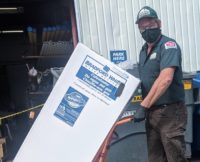
It’s that time of year again where media, prognosticators and media prognosticators try to look into the immediate future to predict, and make sense of, the short-term economy. And, yes, even in this uncertain climate.
According to the Air-Conditioning, Heating & Refrigeration Institute (AHRI), U.S. shipments of residential gas storage water heaters for January 2021 increased 3.4 percent to 397,342 units, up from 384,213 units shipped in January 2020. Residential electric storage water heater shipment saw a 2.4 percent increase in January 2021 to 395,640 units, up from 386,291 units shipped in January 2020.
Commercial gas storage water heater shipments decreased 7.8 percent in January 2021 to 6,642 units, down from 7,207 units shipped in January 2020. Commercial electric storage water heater shipments decreased 7 percent in January 2021 to 11,737 units, down from 12,626 units shipped in January 2020.
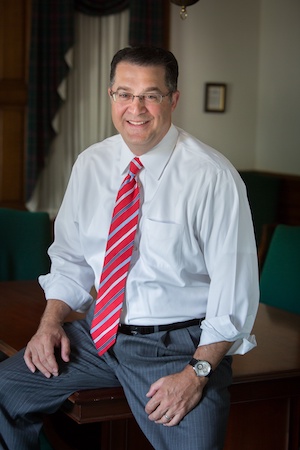 Having said all of that, Mechanical Hub decided to go right to the source to get an up-close sense of how the market is faring. We continue our Forecast Series with Bruce Carnevale, president & CEO, Bradford White.
Having said all of that, Mechanical Hub decided to go right to the source to get an up-close sense of how the market is faring. We continue our Forecast Series with Bruce Carnevale, president & CEO, Bradford White.
MH: When it comes to 2021 industry forecasts, the most resonant word I hear is optimistic. That word can become hollow if it doesn’t have any substance backing it up. I’ve read reports that residential service repair and remodel may remain constant with a slight increase in early 2021. What does the short-term economy look like as it relates to BW?
CARNEVALE: In a word, challenging. While demand for our core residential products remains strong, material and labor costs have risen substantially. Labor availability for manufacturers is still a significant problem and has been exacerbated by COVID-19 complications and government policies. Steel prices are at or near all time highs, and supply is becoming an issue for some manufacturers. These factors lead to longer lead times, higher prices to the end user, and product shortages.
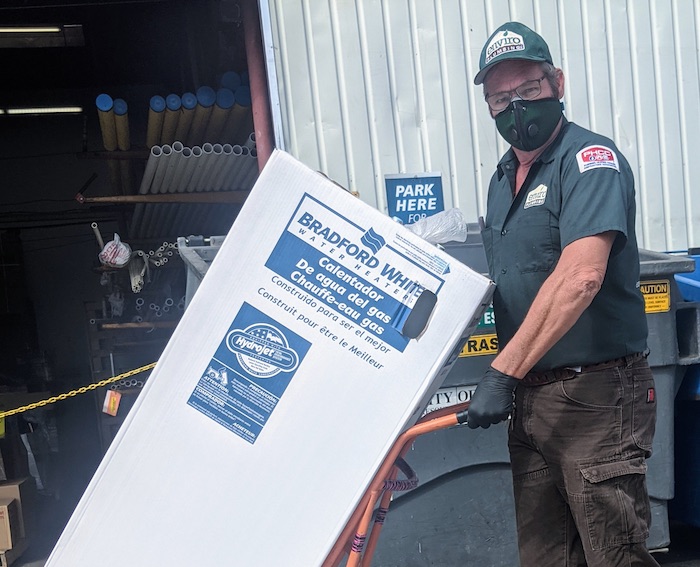
We know intuitively that the “nesting” effect has led to increased demand because household appliances are being use much more that they normally would be. There is no good data on magnitude of the increased demand, nor how long it will last.
Commercial demand has recovered slightly, but with commercial businesses still in some state of shutdown in much of the country, we don’t see that segment starting to recover until the second half of 2021. It is unlikely that the commercial segment will fully recover to pre-pandemic levels until after 2022 because so many businesses will permanently shut down as a result of the pandemic-forced shutdowns.
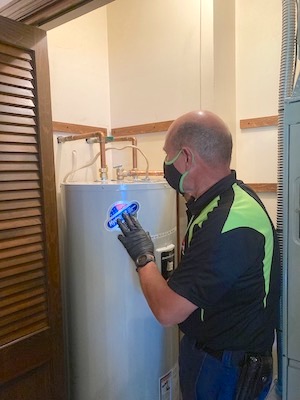 MH: What are some indicators you look at to determine trends, movements, etc.?
MH: What are some indicators you look at to determine trends, movements, etc.?
CARNEVALE: We look at traditional indicators such as housing starts re-sales, mortgage rates, CPI, consumer confidence, manufacturing output and inventories, unemployment rates, etc. Several years ago, we incorporated student loan debt into our analyses since it has such a significant impact on first time homebuyers. Additionally, we closely follow regulations and all levels and social preferences to determine their impact on product trends.
MH: I read somewhere that at the rate the U.S. is distributing the vaccine, we should be back to “normal” by 2024. Perhaps that’s a bit overly dramatic, but how does (has) BW positioned itself from the “fallout” of COVID-19?
The honest answer is that nobody really knows when we will be back to normal. Even after we are, there will be lasting effects from the pandemic. We are following the data and trends closely and adjusting our strategy accordingly. We expect some pre-pandemic trends to change significantly. For example, the trend toward urbanization will change as more people are able to work from home. This leads us to believe that the housing new construction will shift away from multifamily towards single family as people can move further out from cities.
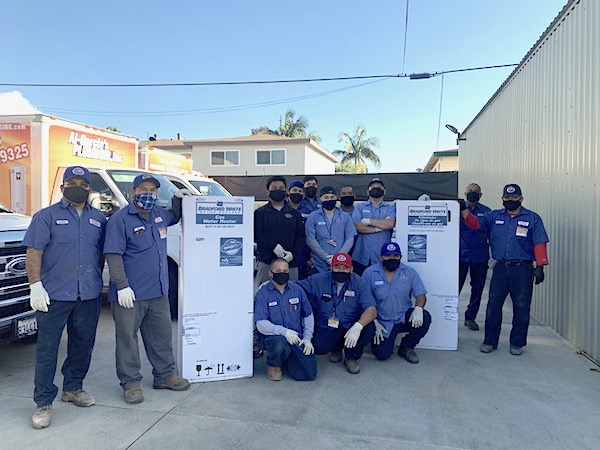
Additionally, we are solidifying supply chain and strengthening our contingency plans, further developing our own work force, and investing significantly in R&D to bring relevant, innovative products to the post-pandemic market.
MH: Is the only certainty heading into early 2021 uncertainty? How do you forecast and budget for such uncertainty? (Or is it fairly certain at this point during the pandemic?)
CARNEVALE: Uncertainty has made forecasting for 2021 is as much art as it is science. We used an immense amount of data, both historical and forward-looking, and applied significantly more assumptions than we typically would. We also included insights derived from some original research projects we commissioned.
MH: Without getting overly political, does a change at the presidential level (and congress) change the outlook for your company, if at all? (Infrastructure, regulations, green energy initiatives, etc.)
CARNEVALE: Yes. It is no secret that the Biden administration will have a very different policy positions than the Trump administration. Some of the expected changes may be helpful, and others will present challenges. Infrastructure legislation, for example, will be good for our industry. We know there will be a focus on green energy initiatives, and that too can be good for our industry if they are thoughtfully applied. The regulatory environment will become more challenging, but we are hopeful that the new administration will partner with manufacturers in developing new regulations.

The National Science Foundation’s Daniel K. Inouye Solar Telescope in Maui, Hawaii, uses the largest mirror of any solar telescope in the world. Thanks to its 13-foot-wide mirror, it collects seven times more sunlight than any other solar telescope, producing the clearest, highest-resolution images ever taken of the sun. Not surprisingly, a solar telescope of Read more
The National Science Foundation’s Daniel K. Inouye Solar Telescope in Maui, Hawaii, uses the largest mirror of any solar telescope in the world. Thanks to its 13-foot-wide mirror, it collects seven times more sunlight than any other solar telescope, producing the clearest, highest-resolution images ever taken of the sun.

Photos courtesy of NSO/AURA/NSF
Not surprisingly, a solar telescope of this size produces a lot of heat. With a working lifespan of about 50 years – after more than two decades of planning by the National Solar Observatory and its partners – there is a lot that goes into keeping the telescope cooled so it can provide groundbreaking scientific insights.
And that’s where Viega comes to the table.
An enormous, unique project
Eventually, there will be more than seven miles of thermal piping within the telescope and support buildings, explained Lou Szabo, Facility Thermal Systems Site Coordinator for the National Solar Observatory. He spends his days helping to finish construction and commissioning the equipment that recently began collecting images of the sun.
Much of the piping was prefabricated years ago, as various parts of the facility and telescope were being built (construction has taken about 10 years). Traditional methods, mainly welding, were used. But then the project came to a crossroads.
“As the various science instruments are installed and other devices added to the telescope, the final piping needs to be completed or modified, and oftentimes in close proximity to optics or one-of-a-kind electronics that are worth millions of dollars – things that would take many years to reproduce if damaged,” Szabo said. “We can’t have any joining methods that use heat or fumes. It has to be a very clean process.
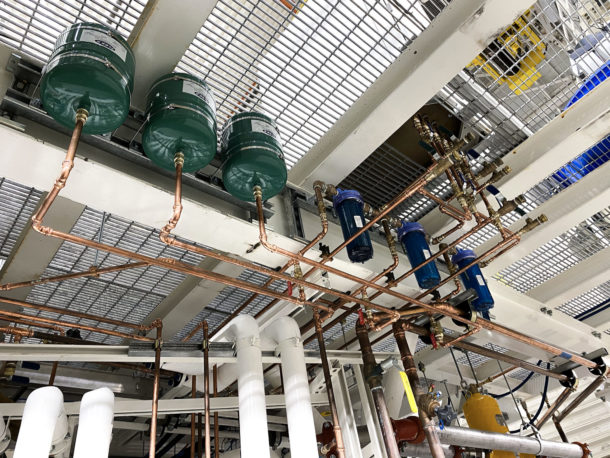
“The only way to install these remaining piping runs is with a joining system that meets the ‘no heat, no fumes, no dust’ requirements – and Viega hit that mark. We can go into these critical areas with very little equipment and complete press joints within inches of sensitive equipment, and the crews don’t have to worry about damaging it.”
As the need for a press-fitting solution surfaced, Szabo was already aware of Viega. He’s been in the piping trades for more than three decades and had previously used Viega.
He also knew that Viega had a large variety of fitting choices and, more importantly, offered plenty of technical support.
“When I presented the press system to the lead engineers and the decision-makers, I had to bring the best system I knew of,” he said. “Viega had been around the longest and had the best technical support if we had a question or got into a bind. We knew we had the reliability of the system behind us. It was really the only choice. I wouldn’t have been comfortable with others.”
Another factor to account for is the ozone conditions. The telescope is located at Haleakalā Observatories, at 10,000 feet in elevation, on the island of Maui. This location allows for great conditions for observing the sun but brings with it other unique elements, too.
“There is a high ozone content in the atmosphere here. Ozone was attacking a lot of rubbers and things, so we use HNBR sealing elements in all of our fittings,” Szabo said. “Some of the coolants we use are more exotic, and the HNBR holds up.”
The bulk of the coolant used is Dynalene HC20. The manufacturer lists both HNBR and EPDM as compatible materials, but the EPDM seal isn’t as resilient with the ozone presence, so Viega’s HNBR sealing elements are the right fit.
Inner workings of the telescope site
A series of primary loops come from the main mechanical/utility building, where all the chillers are located. The loops run to heat exchangers, followed by secondary and tertiary loops. There are dozens of pumps and tanks involved in the complex setup.
Piping in the system includes everything from 6” carbon steel piping to ½” copper tubing. Stainless steel is also used. The miles of piping run coolants and air to keep the telescope project at an appropriate temperature and to keep everything working smoothly. Viega ProPress fittings up to 3” in diameter and MegaPress fittings as large as 2” are used throughout the site.
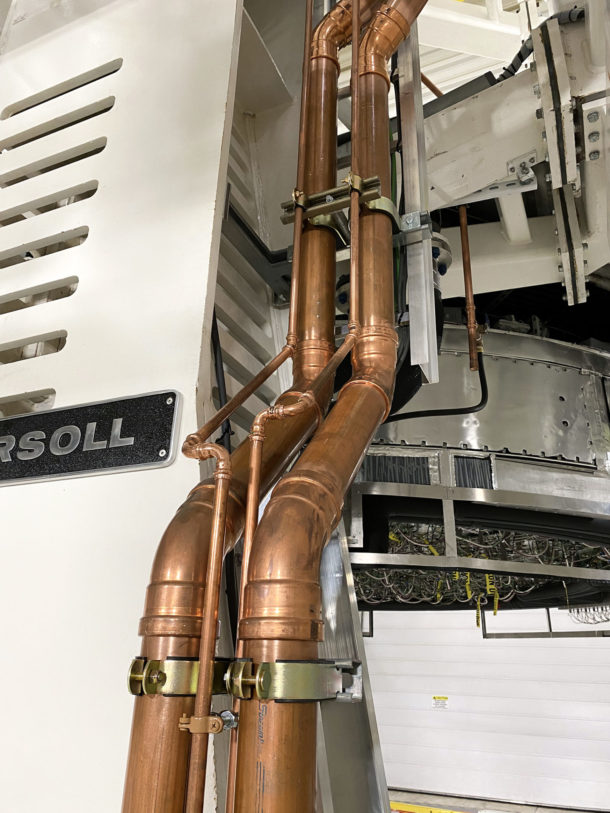
The mirrors and transfer optics are cooled in a variety of ways, including cooled liquid and air. For example, air a few degrees below ambient temperature is typically blown on the back of the mirror cells.
The Dynalene coolant runs at a very low temp, some as low as –2 degrees F, some around 45 degrees. The coolant is also environmentally friendly, which was important for the culturally sensitive site that carried with it many environmental guidelines. Propylene glycol mixtures are also used in some of the scientific chillers.
“A challenge we have in the middle of the Pacific is having fittings available, and that’s why we try to keep our setup as simple as we can,” Szabo said. “It’s also why we went with MegaPress and ProPress. Much of it is available on the islands, whereas other systems are more difficult to get.
“We try to keep a stock of certain fittings and materials on hand and stay ahead of the game. Oftentimes we’re looking at a two- to four-week lead time to get less-common fittings to the island. Thankfully our supplier, PACE Supply, can often get us common fittings within a couple of days.”
Szabo said they strive to keep the piping runs as simple as possible to both limit flow restriction and allow the use of standard elbows, adapters, tees and couplings, which are more readily available on the island.
One-of-a-kind solar research
Plans for the Inouye Solar Telescope (named for the late Daniel Inouye, the U.S. Senator from Hawaii who played a crucial role in getting finances approved for the project and was a big advocate of STEM and science) started 25 years ago. Dr. Claire Raftery, Head of Education, Outreach and Communication for the National Solar Observatory, said innovating how to build something so complicated – and then get it funded – was a massive undertaking.
There was an extensive survey done to determine the location of the telescope. A few hundred sites worldwide were reduced to a short list of 72, which was whittled down to a six. From there, only three met the specific requirements that scientists were looking for, and the location in Maui was chosen.
The Inouye Solar Telescope’s unique location combines clear and vivid blue skies needed to observe the faint corona of the sun with a high elevation and low air turbulence of the atmosphere above the telescope. Thanks to all these things, the telescope can produce the best images of the sun ever taken so that scientists can learn more about the dynamic star.
“We’re studying an object that there’s still a lot of mystery around. Many questions remain unanswered because we don’t yet have the capability to answer them,” Raftery said. “We need more detail, higher resolution – and these are things this telescope will bring to the table. It’s really a fortuitous time to be working in the solar physics industry.”
The telescope is expected to be operational for at least 44 years – four solar cycles – which is one of the benefits of ground-based astronomy, Raftery explained.
“We can expand the abilities of this project much longer than we could from space,” she said. “It’ll never really stop being finished. We can adapt and improve. The team will continue to bring new science experiments online through the life of the telescope.”
Part of the federal requirements from the National Science Foundation include returning the site back to the way it was found, so in 50 years they won’t simply turn off the lights and walk away, but instead the project will eventually be removed from the site after it has run its course.
But with that prospect decades into the future, for now everyone involved with the project is exhilarated as the telescope begins recording images of the sun.
“I remind the crews that they are the only ones in the entire world working on this unique system,” Szabo said. “This is truly a one-of-a-kind project.”

Standing in the entryway to the office, I noticed a poster on the door which read, “Write drunk, edit sober.” A quote attributed to Ernest Hemingway, I knew like hell he wanted to, but I don’t think he would ever sacrifice the things he did the best. You see, Bob Mader was the consummate professional Read more
 Standing in the entryway to the office, I noticed a poster on the door which read, “Write drunk, edit sober.” A quote attributed to Ernest Hemingway, I knew like hell he wanted to, but I don’t think he would ever sacrifice the things he did the best. You see, Bob Mader was the consummate professional who communicated volumes from the weight of his words. And perhaps that’s why he had that poster on the door. Hemingway was famous for short prose, bereft of too many details, a mirror for Mader’s verbal prowess. Bob was a man of few words, anyone would tell you that. But once you got in, you could feel his warm heart, his hearty laugh, his dry sense of humor and the grace in which he interacted with people. And putting pen to paper, he was the best at his craft—the hard work, the writing, the preparedness and research, and the long hours to be “fair and balanced” to everyone, no matter the circumstances.
Standing in the entryway to the office, I noticed a poster on the door which read, “Write drunk, edit sober.” A quote attributed to Ernest Hemingway, I knew like hell he wanted to, but I don’t think he would ever sacrifice the things he did the best. You see, Bob Mader was the consummate professional who communicated volumes from the weight of his words. And perhaps that’s why he had that poster on the door. Hemingway was famous for short prose, bereft of too many details, a mirror for Mader’s verbal prowess. Bob was a man of few words, anyone would tell you that. But once you got in, you could feel his warm heart, his hearty laugh, his dry sense of humor and the grace in which he interacted with people. And putting pen to paper, he was the best at his craft—the hard work, the writing, the preparedness and research, and the long hours to be “fair and balanced” to everyone, no matter the circumstances.
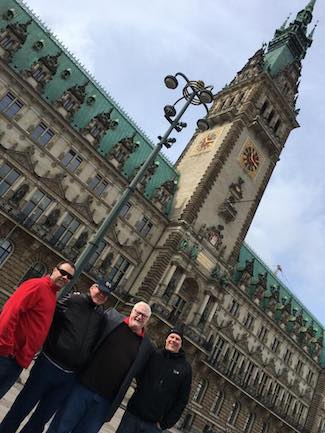 As I entered his office, I scanned the room and noticed all of the trinkets, the swag from industry events, the trade show name tags strategically located throughout—five decades of experiences in the plumbing and HVAC industry. Stuff that most of us take for granted or throw away as soon we leave an event. Not Mader. He loved every part of being a trade journalist. He lived it.
As I entered his office, I scanned the room and noticed all of the trinkets, the swag from industry events, the trade show name tags strategically located throughout—five decades of experiences in the plumbing and HVAC industry. Stuff that most of us take for granted or throw away as soon we leave an event. Not Mader. He loved every part of being a trade journalist. He lived it.
While Bob was working late that Friday afternoon to finish a story, I sat down and started picking up those experiences. The demo fitting from a trip to Wichita, the beer stein from the trips to Germany, the cowboy hat from a trip to Nashville, the ticket stub from the trip to Fenway and the basket of thumb drives from the countless trade shows. The room was full of experiences, and great memories.
 Bob sometimes brought his beautiful wife, Kevyn, to these events, and I was fortunate to meet her and share a laugh with the both of them. While on a trip to D.C., she affectionately referred to him as her “warm biscuit.” Warm, affectionate and caring in every way, I completely understood.
Bob sometimes brought his beautiful wife, Kevyn, to these events, and I was fortunate to meet her and share a laugh with the both of them. While on a trip to D.C., she affectionately referred to him as her “warm biscuit.” Warm, affectionate and caring in every way, I completely understood.
Bob Mader passed away this past Monday, February 22, and it has left a hole in my heart. When Kevyn informed me through a message on Facebook, I couldn’t believe it. I mean, I had just talked with him last week. How could this be possible? I assumed that her account had been hacked. I immediately called his cell and it rang until I heard that familiar voice—that he’d get back to me as soon as he could. But this time, he wouldn’t.

Bob was a gentle giant. Gentle in how treated people with grace, dignity and fairness. Giant not in size but in journalistic stature through the weight of his pen. For nearly five decades, Bob was the consummate professional as he championed for the PHVAC industry, and he went about his business the right way. He was my mentor and my good friend, and I will miss him dearly. I love you, Bob Mader. I hope you know that.
I’m sure you all have your stories with Bob, and let’s rejoice in them. Let’s raise a glass and cheer our good friend. And oh, please don’t let Mader know, I don’t think Hemingway ever said that. 🙂
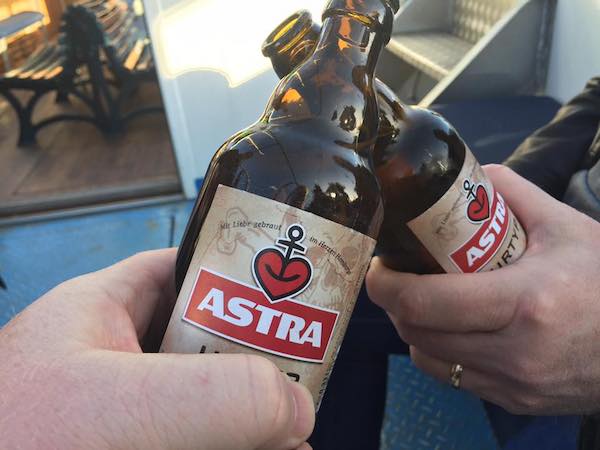
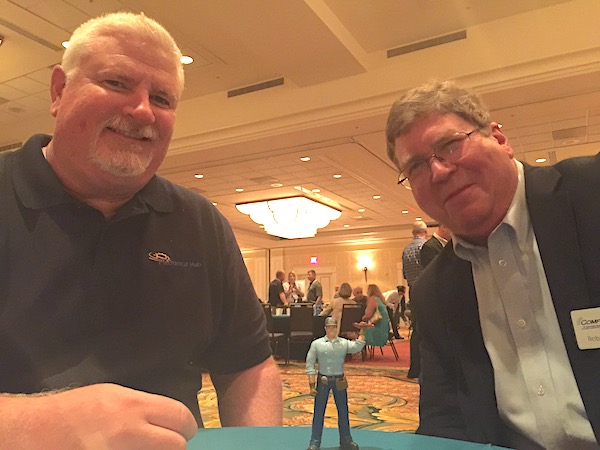


It’s that time of year again where media, prognosticators and media prognosticators try to look into the immediate future to predict, and make sense of, the short-term economy. And, yes, even in this uncertain climate. Mechanical Hub will be featuring a series of exclusive Q & A sessions with industry leaders and players to get Read more
It’s that time of year again where media, prognosticators and media prognosticators try to look into the immediate future to predict, and make sense of, the short-term economy. And, yes, even in this uncertain climate. Mechanical Hub will be featuring a series of exclusive Q & A sessions with industry leaders and players to get their views on the future, and living in a COVID world. The second part of the series, we talk with Matt Erickson, CEO, C.J. Erickson Plumbing Co., Alsip, Ill., a plumbing contractor for commercial and site work since in the Chicago area since 1906.

MH: When it comes to 2021 industry forecasts, the most resonant word I hear is optimistic. That word can become hollow if it doesn’t have any substance backing it up. What does the short-term economy look like as it relates to your company?
ERICKSON: I hear the same “optimistic” description but believe that it is a National forecast and includes all sectors. We’ve been following the AIA info since March and believe non-residential construction will be down in 2021 and look brighter for 2022 in the local Chicagoland market. Our estimating has been steady so far this year compared to 2020 but don’t feel the pace will remain the same for February and March.
MH: Piggybacking off of that , what are some indicators you look at to determine trends, movements, etc.?
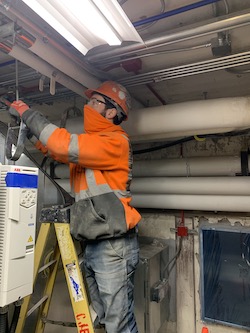 ERICKSON: In addition to the AIA data, we follow local trade employment statistics (how many tradesmen are out of work), we look at hours worked by our field employees and compare week, month and year over year. Our estimating data can point to general trends in quantity and size of projects in the market.
ERICKSON: In addition to the AIA data, we follow local trade employment statistics (how many tradesmen are out of work), we look at hours worked by our field employees and compare week, month and year over year. Our estimating data can point to general trends in quantity and size of projects in the market.
MH: Do you think companies have enough backlog to carry them through at least the first half of 2021?
ERICKSON: That’s a tough one… we’re seeing a fair number of opportunities but they are smaller in value and duration. I think there will not be enough large, long duration (12 – 24 months) projects available this year to maintain the collective industry hours worked in 2020. Prices are falling and end users are getting great deals as everyone competes for fewer good opportunities.
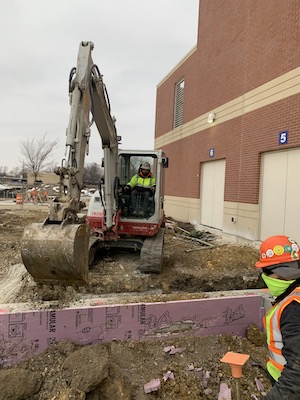 MH: I read somewhere that at the rate the U.S. is distributing the vaccine, we should be back to “normal” by 2024. Perhaps that’s a bit overly dramatic, but how does (has) C.J. Erickson positioned itself from the “fallout” of COVID-19?
MH: I read somewhere that at the rate the U.S. is distributing the vaccine, we should be back to “normal” by 2024. Perhaps that’s a bit overly dramatic, but how does (has) C.J. Erickson positioned itself from the “fallout” of COVID-19?
ERICKSON: The non-residential construction process can be time consuming and I believe the industry will feel the pain from the pandemic long after the some sort of “normal” returns for the most affected industries. We are taking some time to clean-up some processes and update our training, in preparation for the gradual climb back to normal.
MH: Does a change at the presidential level change outlook for your company, if at all? (Infrastructure, green energy initiatives, stimulus, etc.)
ERICKSON: Possibly, if any of the programs or spending props up the commercial and industrial constriction market. Otherwise, I do not believe the new administration will change the outlook for our company.
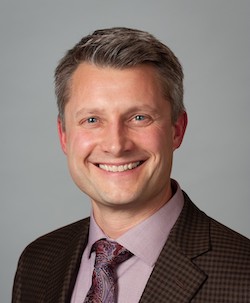 Matt Erickson is CEO of C.J. Erickson Plumbing Co., a Chicago-area plumbing contractor since 1906. C.J. Erickson Plumbing Co. employs over 100 people including union plumbers, laborers and operating engineers. We specialize in commercial plumbing, industrial plumbing, hydro-excavation and site utility and underground services.
Matt Erickson is CEO of C.J. Erickson Plumbing Co., a Chicago-area plumbing contractor since 1906. C.J. Erickson Plumbing Co. employs over 100 people including union plumbers, laborers and operating engineers. We specialize in commercial plumbing, industrial plumbing, hydro-excavation and site utility and underground services.

When approached by Greenlee to test a new product late last year, we knew it was the perfect opportunity to work with a couple of our favorite electrical contractors, Adam Sperry and Jon Block. Jon and Adam have been friends of The Hub for several years and bring a ton of electrical experience and knowledge Read more
When approached by Greenlee to test a new product late last year, we knew it was the perfect opportunity to work with a couple of our favorite electrical contractors, Adam Sperry and Jon Block.
Jon and Adam have been friends of The Hub for several years and bring a ton of electrical experience and knowledge to our sites. We connected them with Greenlee and after a few projects over a couple months, they share their experience with the Greenlee GSB Series Step Bits.
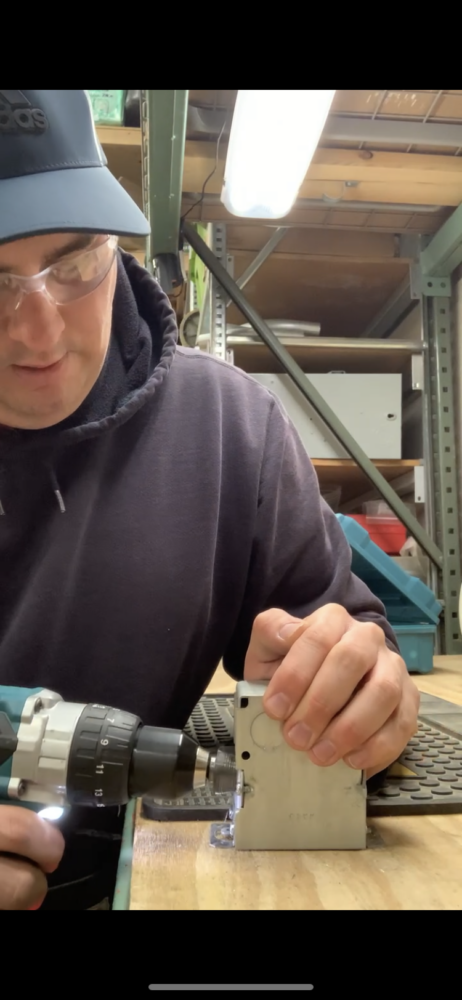
Jon Block reviews Greenlee GSB Series Step Bits
First off, the step bits are ideal for advanced hole making solution and feature an improved split-point tip for even faster penetration and a patented split-step design to optimize chip load for a faster and smooth cutting experience while achieving more holes per charge.
“These are perfect for making holes in conduit and steel junction boxes as well as enclosures for conduit knockouts or enlarging holes to accommodate larger conduit openings,” said Jon Block, LH Block Electric.
“There’s no reservations in using these bits, Greenlee has a long history in the trade of high-quality products. I’m sure Jon and I both look for a product that is priced appropriate to the results attained and Greenlee is a brand I trust and believe in due to their quality products,” Sperry shared.

Both agreed that the progressive cutting edges on the bits provided balanced aggression to maximize torque efficiency and minimize stalling when using a cordless drill.
Additionally, an improved double flute design provides enhanced chip evacuation, while also increasing cutting speed and bit life. Laser markings on the bits allow for easy part and size identification.
The GSB Series Step Bits for mild steel are offered in two sets, available in 10 Imperial-sized step bits ranging from 1/8-inch to 1-3/8-inch, and three Metric-sized step bits ranging from 4mm to 32.5mm.

Adam’s Final Assessment:
- “These bits are the fastest, smoothest, most durable bits I have used and have performed beyond expectations even when subjected to less-than-ideal conditions.”
- “Personally, I see step bits as a “consumable” item, which I feel is contrary to popular opinion. Most people feel as though the price associated with quality step bits somehow means they should last forever. I disagree. There are a lot of situations where the drilling is less than ideal, or the driller is less than adequately trained which can lead to more wear and tear on a bit. I also prefer the bits to NOT have the quick connect shaft or be impact rated.”
https://www.instagram.com/p/CI1l-qLDl5-/
Jon’s Final Assessment:
- ” I love the double flute design and the marked with common conduit knockout sizes and long-life durability.”
- “The split step and the longer step for the common conduit hole sizes makes this a great tool for quick knockouts instead of grabbing a hydraulic knockout set. Greenlee tools are the best in the electrical contracting business.”
- Facebook Product Video
Professionals interested in the GSB Step Bits can visit Greenlee.com/StepBits to learn more information. To request a hands-on tool demonstration from a Greenlee Pro Tool Specialist, visit Greenlee.com/requestdemonstration. For more information on Greenlee, visit Greenlee.com.
ProStaff Reviewers:
 Adam got his start in the electrical industry 20+ years ago from his father who was an electrical distributor general manager. Adam has always been keen on working with his hands and takes an extreme satisfaction in watching a project come together from start to finish. One of the keys he brings to our ProStaff is his ability to share whatever tools, insights, tips, tricks, and lessons that have helped him in his career. You can find him on social media at:
Adam got his start in the electrical industry 20+ years ago from his father who was an electrical distributor general manager. Adam has always been keen on working with his hands and takes an extreme satisfaction in watching a project come together from start to finish. One of the keys he brings to our ProStaff is his ability to share whatever tools, insights, tips, tricks, and lessons that have helped him in his career. You can find him on social media at:
- Instagram – completelycordless
- YouTube – Completelycordless
 Jon, after serving his apprenticeship and acquiring his Chicago Supervising Electrician License, Jon joined his family at LH Block Electric in 1998. Jon brings a unique and extreme work ethic and his many new innovative ideas to the company and currently serves as the job superintendent and chief estimator. He is also a certified electrical inspector and loves teaching the trade in the classroom and in the field. Jon can be found on Facebook at:
Jon, after serving his apprenticeship and acquiring his Chicago Supervising Electrician License, Jon joined his family at LH Block Electric in 1998. Jon brings a unique and extreme work ethic and his many new innovative ideas to the company and currently serves as the job superintendent and chief estimator. He is also a certified electrical inspector and loves teaching the trade in the classroom and in the field. Jon can be found on Facebook at:
- Facebook – LH Block Electric
